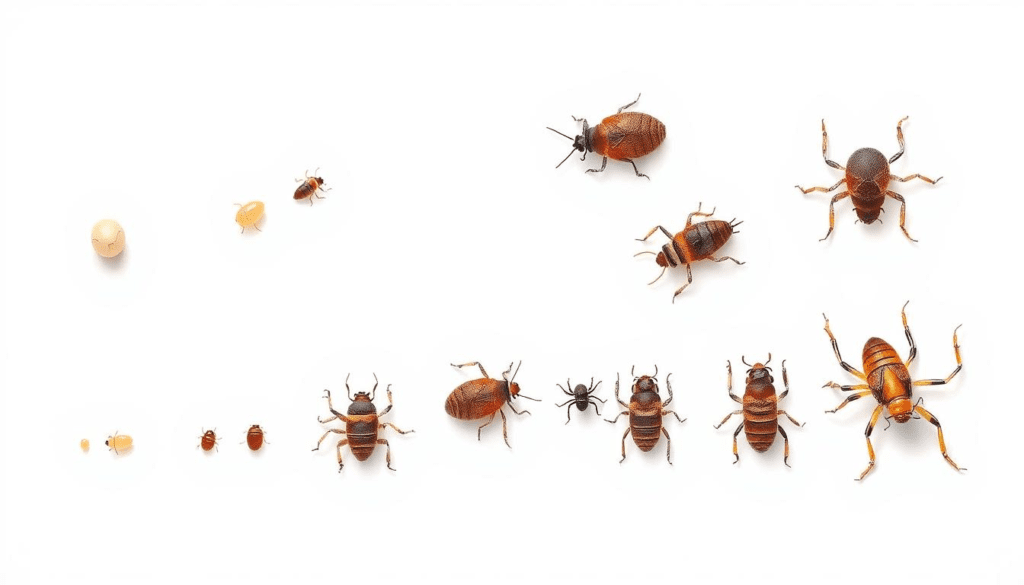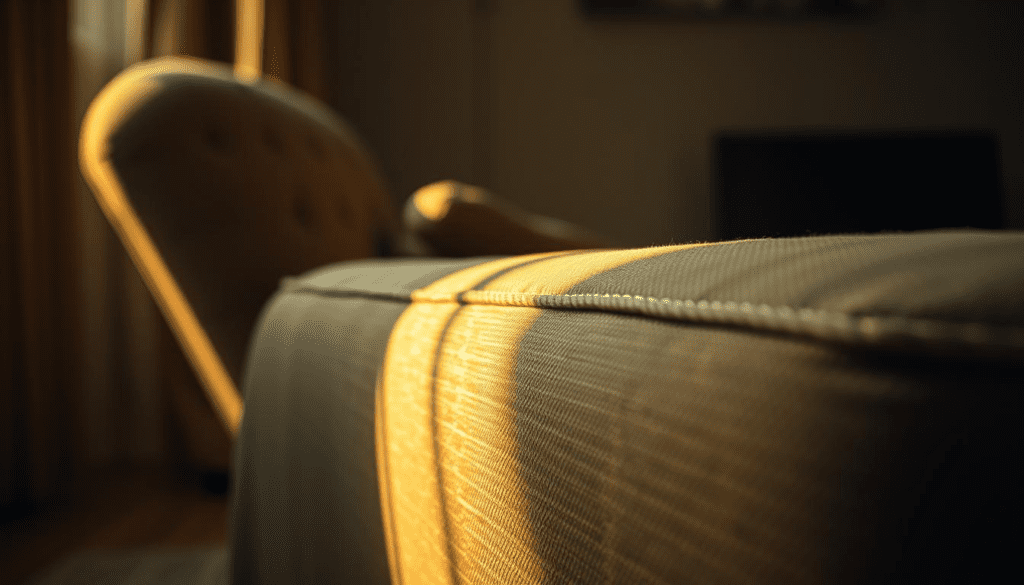Lice are parasitic insects that survive by feeding on human blood, and their ability to live off the human scalp is extremely limited. Still, concerns about lice infesting household items like couches are common, especially after a lice outbreak in the family. Every year, over 12 million cases of infestations happen in the U.S., often because people overlook lice on furniture. So, the question is how long can lice live on a couch?
Understanding Lice: Life Cycle, Behavior, and Survival Strategies

Typical Lifespan of Lice Off the Human Scalp
Lice, specifically head lice (Pediculus humanus capitis), are highly dependent on the warmth and nourishment provided by the human scalp. Once they are removed from the host, their lifespan dramatically decreases.
- Without a blood meal, lice typically die within 24 to 48 hours.
- Nits (lice eggs), on the other hand, can survive longer—up to 7–10 days—but they require the constant warmth of the scalp to hatch.
- Lice cannot jump or fly; they only crawl, which limits their mobility from the couch to a person.
How Environment Affects Lice Survival on Furniture
Environmental factors play a crucial role in determining whether lice can survive and how long can lice live on a couch?
Temperature and Humidity
Lice thrive at body temperature (around 98.6°F or 37°C). When exposed to cooler room temperatures or dry environments, they become immobile and eventually die.
- Lower temperatures slow down their metabolism and hasten death.
- Low humidity causes lice to dehydrate quickly, reducing survival time.
Type of Fabric
Lice are more likely to cling to porous or textured fabrics like:
- Upholstered couches
- Cushions
- Blankets or throws left on the sofa
Cleaning Frequency
Vacuuming, steaming, or laundering items in hot water significantly reduces the chances of lice surviving on any furniture surface. Even without cleaning, lice can’t survive long, but proper sanitation ensures peace of mind and prevents possible re-contact.
Can Lice Reinfest You from a Couch?
Yes, lice can reinfest you from a couch, but only under very specific conditions.
How Reinfestation Happens?
- If a live louse crawls onto the couch and a person sits or lies in that exact spot within 24–48 hours, there’s a chance it could crawl back onto the scalp.
- Nits are not a direct threat unless they are attached to hair and within the right temperature range. If nits fall onto the couch, they are unlikely to hatch or survive.
Risk Factors for Reinfestation
- Shared use of furniture by multiple people within short timeframes.
- Lack of proper cleaning or sanitation after lice exposure.
- Infested pillows, blankets, or headrests that maintain body heat.
Understanding Lice Behavior in Home Environments
To effectively control or prevent lice infestations, it’s crucial to understand how these parasites behave in indoor spaces especially around high-contact areas like couches, beds, and upholstered furniture. While lice cannot survive long without a host, their behavior and movement patterns can still make furniture a potential transmission point.
Why Lice Prefer the Human Scalp
Head lice are obligate human ectoparasites, meaning they must live on the human body to survive. The scalp provides the ideal habitat for several reasons:
1. Constant Blood Supply
Lice feed on human blood several times a day. The scalp’s thin skin and dense capillary network make it the perfect feeding ground.
2. Optimal Temperature
The human head maintains a stable temperature of around 98.6°F (37°C), which is essential for lice survival and egg development.
3. Hair for Clinging
Lice have specialized claws adapted for gripping hair strands. This allows them to move from root to tip and remain securely attached.
4. Moisture & Protection
The human scalp provides the moisture lice need to avoid dehydration. It also shelters them from environmental changes and predators.
How Lice Transfer from People to Couches?
Although lice are primarily transmitted through direct head to head contact, they can occasionally transfer to inanimate objects (fomites) like couches, bedding, or hats.
Here’s how it happens:
1. Shedding from Hair
During activities such as lying down, resting, or brushing hair on the couch, live lice or eggs (nits) can fall onto the upholstery.
2. Crawling Behavior
Lice do not jump or fly; they only crawl. If a louse is dislodged from a person’s hair, it may crawl a short distance before dying.
3. Shared Surfaces
Couches used by multiple people in quick succession, especially after a lice outbreak, present a higher risk of incidental transfer.
Signs of Lice on Your Couch
Although it’s rare, lice or their eggs might occasionally end up on a couch. Detecting them on furniture can be difficult due to their size and color, but some subtle signs may indicate their presence:
1. Itching After Contact
If someone experiences itching or scalp irritation shortly after using a particular couch, it could suggest the presence of lice on the fabric.
2. Visible Lice or Nits
- Adult lice are about the size of a sesame seed and are tan to grayish-white.
- Nits are small, oval, and often appear white or yellowish, usually attached to hair. On fabric, they may be mistaken for lint or dust.
Using a magnifying glass or bright light may help identify these signs.
3. Residue or Debris
Lice excrete waste and leave behind shed skins as they molt. You may spot tiny black or brown specks in creases of fabric or along seams.
4. Increased Lice Cases in the Household
If multiple family members keep getting lice despite treatment, it may be due to reinfestation from commonly used furniture, including the couch.

How to Get Rid of Lice on Couches?
If someone in your household has had lice, it’s essential to clean not just their hair and clothing, but also commonly used furniture like couches. While lice don’t survive long off the scalp, they can linger on upholstery for up to 48 hours, which may result in reinfestation if not handled properly. Let’s explore effective and evidence-based strategies to eliminate lice from your couch.
Cleaning Methods to Kill Lice on Upholstery
Upholstered furniture, especially couches, can serve as temporary resting spots for lice or nits. To prevent lice from re-entering the hair of treated individuals, a thorough cleaning routine is crucial.
Remove and Wash Removable Covers
- If your couch has removable cushion or pillow covers, wash them in hot water (at least 130°F or 54°C) and dry them on high heat for 30+ minutes.
- High temperatures can kill live lice and unhatched nits effectively.
Use a Lice-Safe Fabric Spray
- Apply a pesticide-free lice spray designed for upholstery. Look for products containing ingredients like enzymes or essential oils (e.g., tea tree oil, neem, or peppermint).
- These sprays help neutralize lice without leaving harsh chemical residues.
Disinfect Accessories
- Don’t forget throw pillows, blankets, and stuffed animals left on the couch. Place them in sealed plastic bags for 48–72 hours, or run them through a hot dryer cycle if possible.
Brush or Comb the Fabric
- After cleaning, use a lint roller or fine-toothed fabric brush to remove any remaining debris, eggs, or insects caught in the fibers.
Using Heat and Vacuuming to Eliminate Lice
Heat and suction are among the most effective physical methods to eliminate lice and their eggs from furniture.
1. Steam Cleaning
- Steamers that reach a minimum of 130°F (54°C) can kill lice and nits instantly.
- Steam along seams, crevices, and cushion gaps where lice may hide.
- Avoid over-wetting fabric; use short bursts and allow the couch to dry thoroughly afterward.
2. Vacuuming
- Vacuum the entire couch, focusing on:
- Seams and stitching
- Under cushions
- Cracks and crevices
- Use a HEPA-filter vacuum to trap microscopic debris and prevent allergens from recirculating.
- Dispose of vacuum contents in a sealed plastic bag immediately after use.
3. Sun Exposure
- If possible, place your couch cushions outside in direct sunlight for several hours. UV rays and heat are natural deterrents to lice survival.
4. Heat Treatment for Cushions
- For small detachable cushions, place them in a large black plastic bag and set them outside in direct sunlight for a full day. The heat buildup inside the bag may reach lethal temperatures for lice.
When to Consider Professional Lice Removal Services
While home methods are often sufficient, certain situations may call for expert intervention especially when infestations are persistent or extensive.
1. Recurrent Reinfestation
- If lice keep returning despite repeated treatment, it may indicate overlooked lice on furniture or shared household surfaces.
- Professionals can identify and treat less obvious sources of infestation.
2. Allergy or Chemical Sensitivity
- If someone in your home has allergic reactions to sprays or cleaning agents, lice removal specialists offer non-toxic alternatives, including enzyme-based or manual methods.
3. Deep Cleaning Services
- Some pest control or lice treatment companies offer in-home furniture cleaning that includes:
- Steam cleaning
- Vacuum extraction
- Non-chemical disinfectants safe for kids and pets
4. Large Households or Shared Living Spaces
- In homes with multiple children, caregivers, or shared bedrooms, professional help can ensure all potential reinfestation points (including couches, carpets, and bedding) are addressed thoroughly.

How to Prevent Lice from Spreading at Home?
Implementing strategic prevention methods, cleaning routines, and educational efforts can help stop lice in their tracks and avoid future outbreaks.
Washing Pillows, Blankets, and Covers
Lice and their eggs (nits) can cling to bedding and soft surfaces, especially items that come into close contact with the scalp. Proper washing and drying techniques are essential to kill any live lice and prevent reinfestation.
1. Use High Heat for Washing
- Wash all pillows, pillowcases, blankets, and cushion covers in hot water (at least 130°F or 54°C).
- The high temperature is proven to kill both lice and nits effectively.
2. Dry Thoroughly on High Heat
- Dry the items on the highest heat setting for at least 30–45 minutes.
- Lice cannot survive the sustained heat of a dryer cycle.
3. Clean Daily During Treatment Period
- While someone in the house is being treated for lice, wash their bedding and blankets daily to prevent the risk of crawling lice re-entering the scalp.
4. Isolate Non-Washable Items
- Items that cannot be washed (like some decorative pillows or plush toys) should be placed in a sealed plastic bag for at least 72 hours. Lice die within 1–2 days without a host.
Educating Family Members About Lice Prevention
Knowledge is one of the strongest defenses against lice infestations. Educating everyone in your household about how lice spread and how to avoid transmission is essential to keeping your home lice-free.
1. Explain How Lice Spread
- Lice move by crawling they cannot jump or fly.
- Teach children and adults alike that head-to-head contact is the most common way lice spread.
- Sharing hats, brushes, headphones, or pillows increases the risk of lice transfer.
2. Promote Personal Item Hygiene
- Encourage everyone to use their own combs, towels, and hair accessories.
- Store personal items in separate containers or cubbies to avoid accidental sharing.
3. Communicate with Schools and Daycares
- If a lice case is discovered, notify your child’s school or daycare so they can take preventive measures and alert other parents.
- Ask about their lice prevention policies and what procedures they follow during an outbreak.
4. Teach Regular Hair Checks
- Show family members how to perform quick scalp inspections, especially after sleepovers, camp, or group activities.
- Early detection helps catch lice before they spread to others.
Best Practices for Preventing Reinfestation
Once lice are removed, the goal is to keep them from coming back. By adopting smart habits and cleanliness routines, you can significantly reduce the chances of reinfestation.
1. Continue Monitoring for 2–3 Weeks
- Even after successful lice treatment, continue checking the scalp daily for 7–10 days, and then every few days for a total of 3 weeks.
- Nits may survive longer and hatch if missed during treatment.
2. Use Preventive Sprays or Essential Oils
- Consider using lice-repellent sprays made from tea tree oil, lavender, or peppermint. These natural repellents can deter lice from settling in.
- Spray on hair and around headwear or backpack areas during school season.
3. Clean Brushes and Combs
- Soak combs, brushes, and hair clips in hot water (at least 130°F) for 5–10 minutes daily during treatment.
- Disinfect or replace items if you suspect contamination.
4. Avoid Head-to-Head Contact During Outbreaks
- Limit physical closeness and shared seating arrangements if someone in the household or school has lice.
- Assign personal couches or pillows for each individual temporarily.
5. Vacuum High-Contact Surfaces
- Regularly vacuum couches, carpets, rugs, and car seats.
- Focus on areas where heads frequently rest, such as couch cushions or headrests.
Final Thoughts
Knowing how lice behave and their limits is essential. They can’t survive long without a human host. But, by cleaning well and treating early, you can stop them. Regular vacuuming and hot laundry cycles help a lot. Catching lice early is also key to keeping your home clean.
Some wonder if lice can live on dogs. The answer is no, but dog beds need cleaning too. This stops lice from spreading. Keeping pets’ areas clean helps everyone stay healthy. To keep your home safe, you must be consistent. Use science and practical steps together. Regular checks, good cleaning, and quick action when needed keep your home free of lice.

 Medically reviewed by
Medically reviewed by